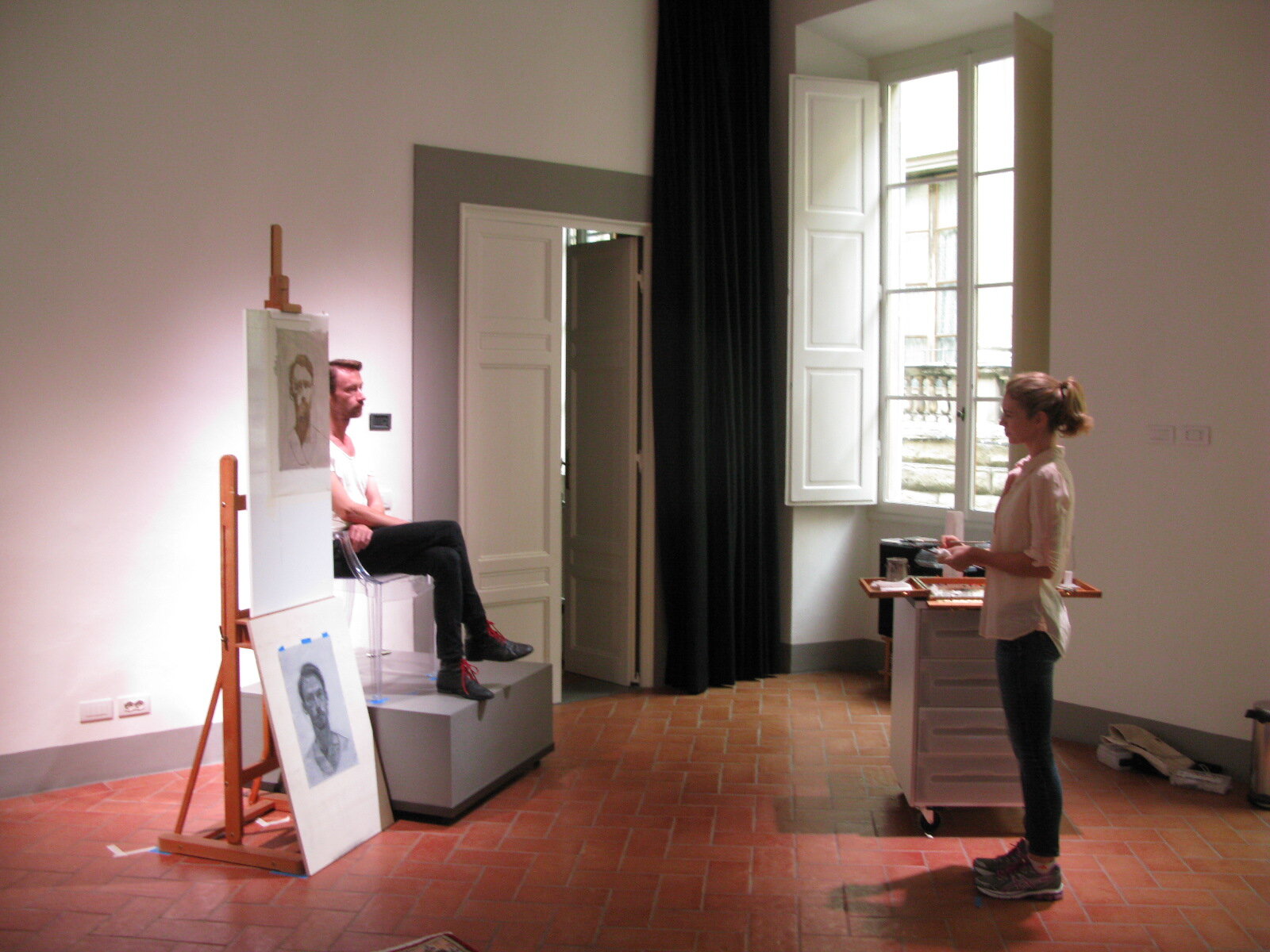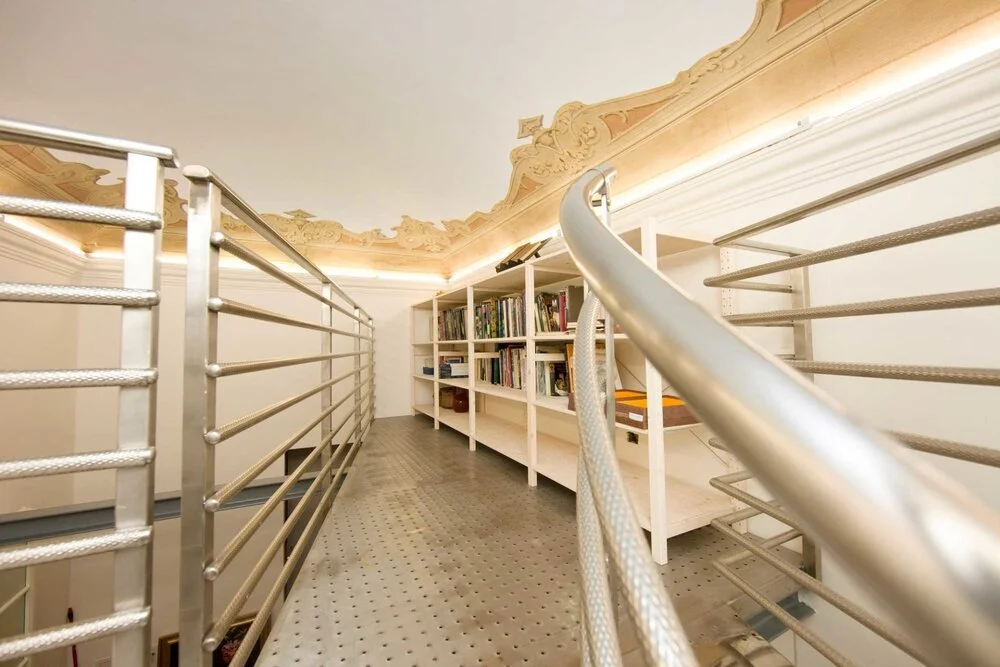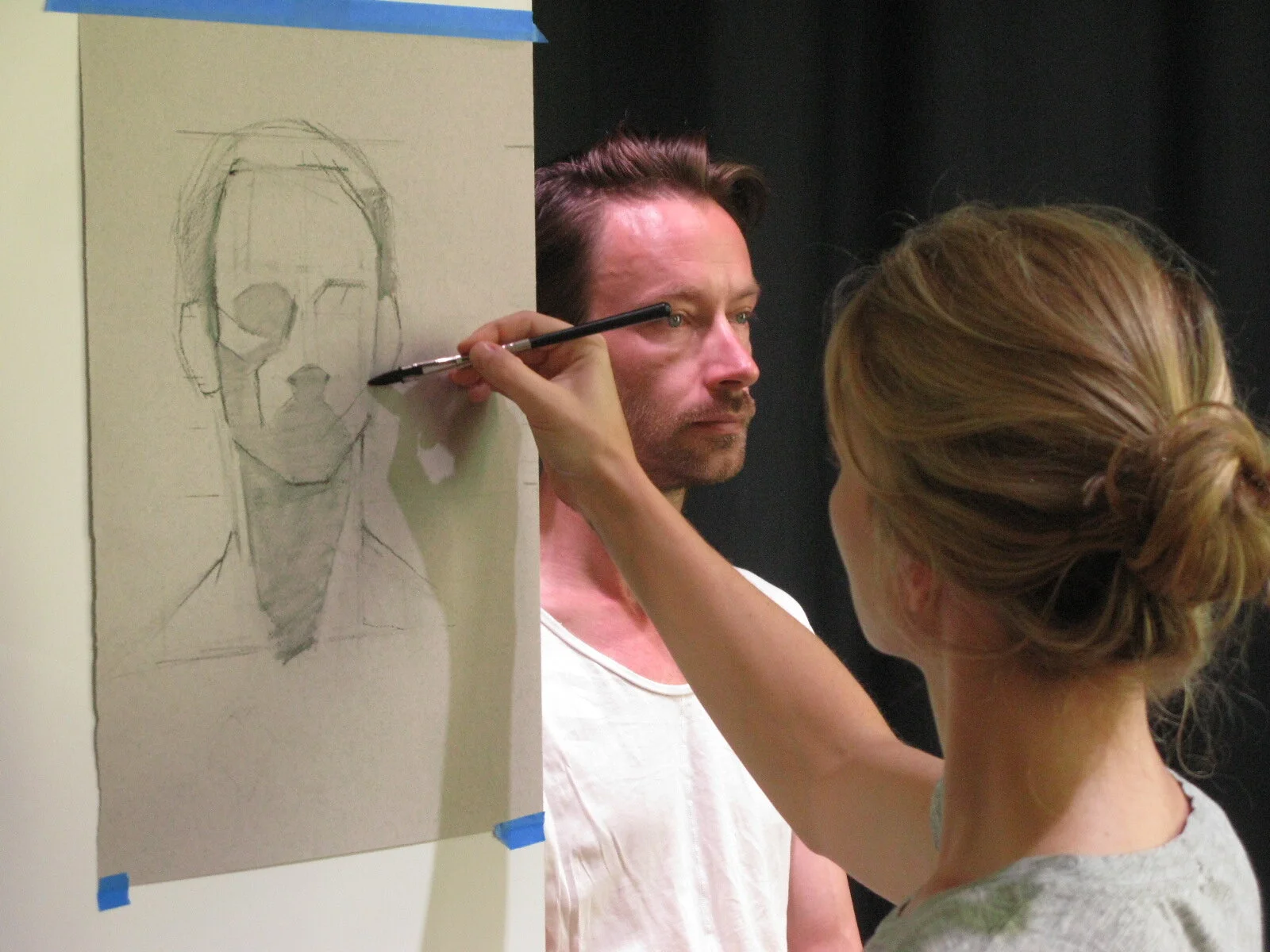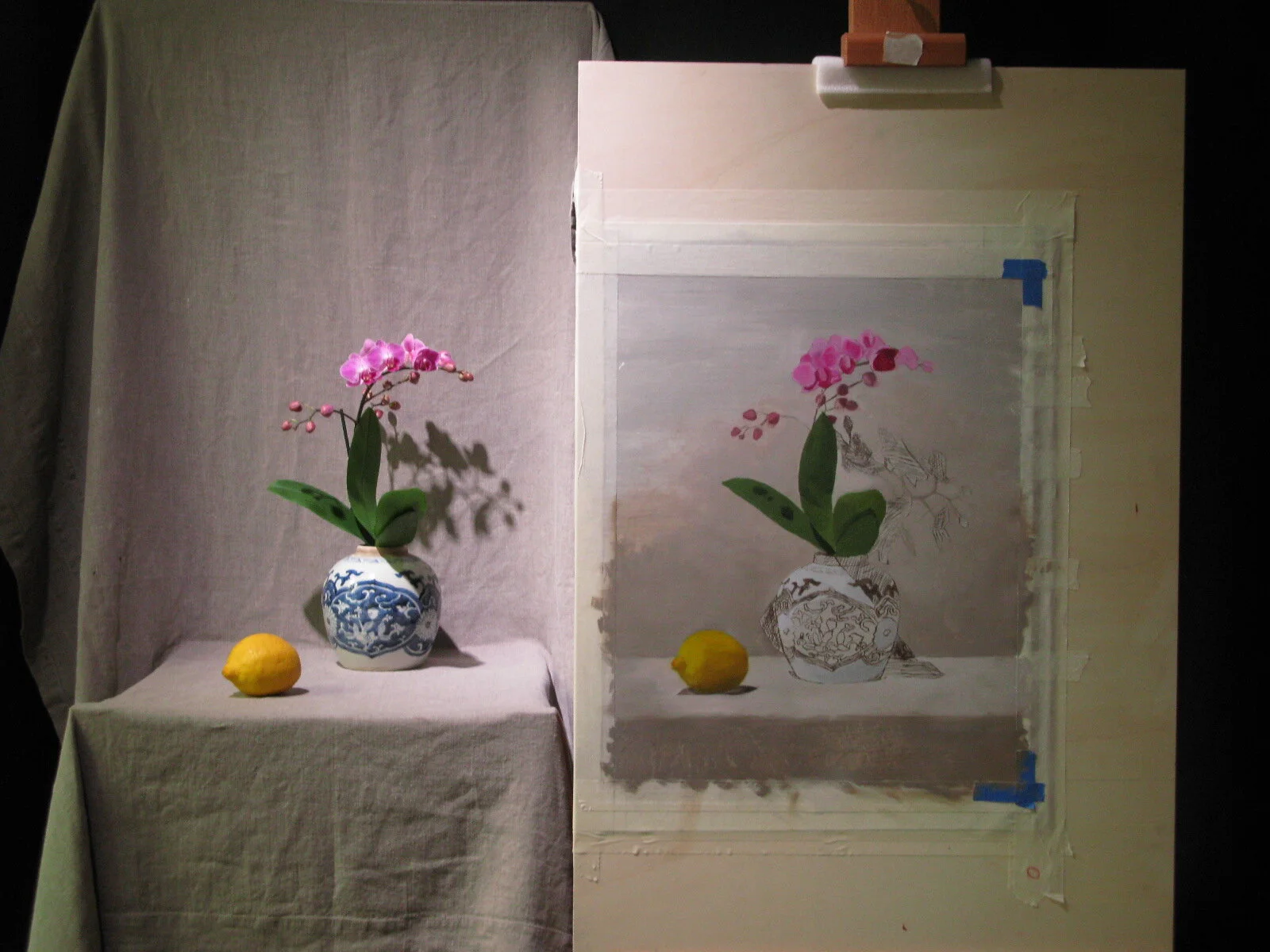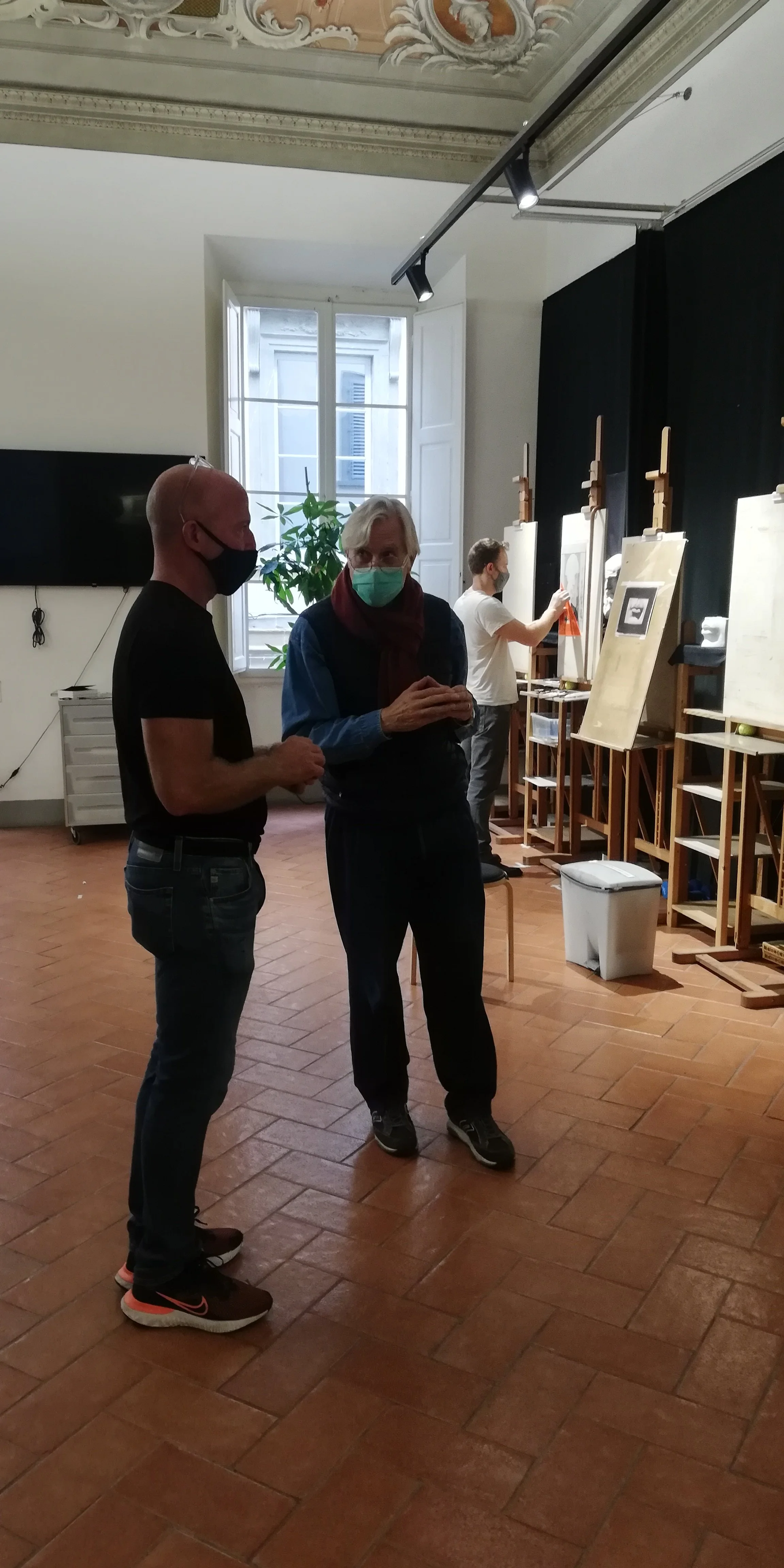
Methodology
Remember even Dante needed Virgil as a guide.
The teaching methodology of the Florence Art Studio is a personal approach; essentially one on one lessons utilizing the instruction modules based upon your current ability and what might be accomplished in your intended time frame to achieve your goals. The methodology also uses cognitive science to enhance development and performance.
The training is divided into discrete and sequentially progressive modules lasting from one week to a month or more. These modules provide students with a disciplined study of the fundamentals of drawing and painting from life.
Students work within a structured environment, under the guidance of an instructor who personally monitors their progress and development for three hours a day.
The most challenging aspect of the training is not what you may think; it is learning how to “see”.
Actually the eye “sees” what the brain perceives, meaning that you only see what you understand. Once this aspect of “artistic seeing” is clearly understood the rate of progress becomes accelerated and is limited only by the personal capacity to master the technical aspects of the craft.
Learning drawing and painting is very much like learning a foreign language: a mental construct, a unique way of thinking. There are valleys, plateaus and peaks and the student moves across them at a rate relative to their resistance level: when you get through one aspect, then the next one pops up immediately.
The first step is the understanding /perception of edges which is line, which leads to the understanding /perception of shapes, negative and positive, which need to be placed in their correct relationship, and in proportion and perspective as seen in the whole. When this is understood then these skills lead to the understanding /perception of values, which leads to the understanding /perception of colors as values which leads to painting, and combining all that was learned before.
The Sight Size Method
A principal tool for “seeing” is the use of the sight-size technique, whereby subject and image are depicted to scale as seen from a given distance. When properly understood, sight-size is not a mere measuring technique, but a mental construct. Its benefits are that it produces an accurate transcription of the subject in the same size in which it is perceived, thus permitting a continuous comparison with the model/subject.
This allows the student to estimate accurately the apparent measurements of the subject and transfer it to a drawing or painting. From the very beginning students endeavor to see the image as a whole.
Mastery of the sight-size method brings confidence, as students learn to “see” and self-correct their own work. Fundamental in developing perceptional skills is the practice of drawing and painting from life using the sight-size method.
The student learns how to learn, to be patient, disciplined, and objectively self-critical to transform every small obstacle or challenge into a rewarding lesson. The program is intensively taught in an encouraging environment, with a great deal of personal attention to give the most to the student’s available time and energy. Significant progress can be achieved within a short period of time if there is willingness and determination.


